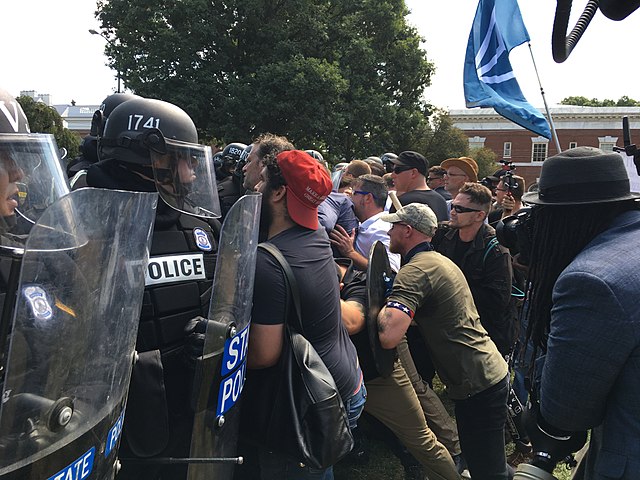American News
Charlottesville council reviewing report, talking next steps

FILE: Charlottesville, VA August 12, 2017 (Photo By Evan Nesterak – White supremacists clash with police, CC BY 2.0)
CHARLOTTESVILLE, Va. — Charlottesville residents are getting a chance to address city leaders for the first time since a former federal prosecutor released a report sharply critical of the government and law enforcement response to a white nationalist rally this summer.
Former U.S. Attorney Tim Heaphy was scheduled to formally present the findings of his months-long review to the City Council on Monday night after releasing a report publicly on Friday. His report found a lack of planning, poor communication and a passive response by law enforcement to the chaos that unfolded at the Aug. 12 “Unite the Right” rally.
City Manager Maurice Jones was expected to unveil an “action plan” at the meeting that he said in a statement Friday “will outline what we have been working on the last couple of months, what policies are still to be addressed and a timeline for implementing those policies.”
Residents will also have a chance to weigh in during a public comment period. The council chambers were nearly full two hours before that portion of the meeting was set to begin.
Charlottesville became a target for white nationalists after the council voted to remove a statue of Confederate Gen. Robert E. Lee.
After several smaller rallies, hundreds of white nationalists and counterprotesters converged downtown on Aug. 12. Fighting broke out before the event officially began, and the brawling went on for nearly an hour in front of officers until the event eventually disbanded. Later, as counterdemonstrators were peacefully marching through a downtown street, a car drove into the crowd, killing 32-year-old Heather Heyer and injuring many more.
Heaphy’s investigation — which involved around 150 interviews and a review of photos, video and more than half a million documents — said neither free speech nor public safety was protected that day, “which has led to deep distrust of government” within the community.
State police directed their officers “to remain behind barricades rather than risk injury responding to conflicts between protesters and counter-protesters,” the report said. And Charlottesville commanders “similarly instructed their officers not to intervene in all but the most serious physical confrontations.”
The report said the fact that officers were dressed in everyday uniforms, not riot gear, at the outset caused problems.
The report also found that police removed an officer from the area where the car plowed into counterprotesters, leaving only a small sawhorse in place at the time.
“Supervisors devised a poorly conceived plan that under-equipped and misaligned hundreds of officers. Execution of that plan elevated officer safety over public safety,” the report said.





















